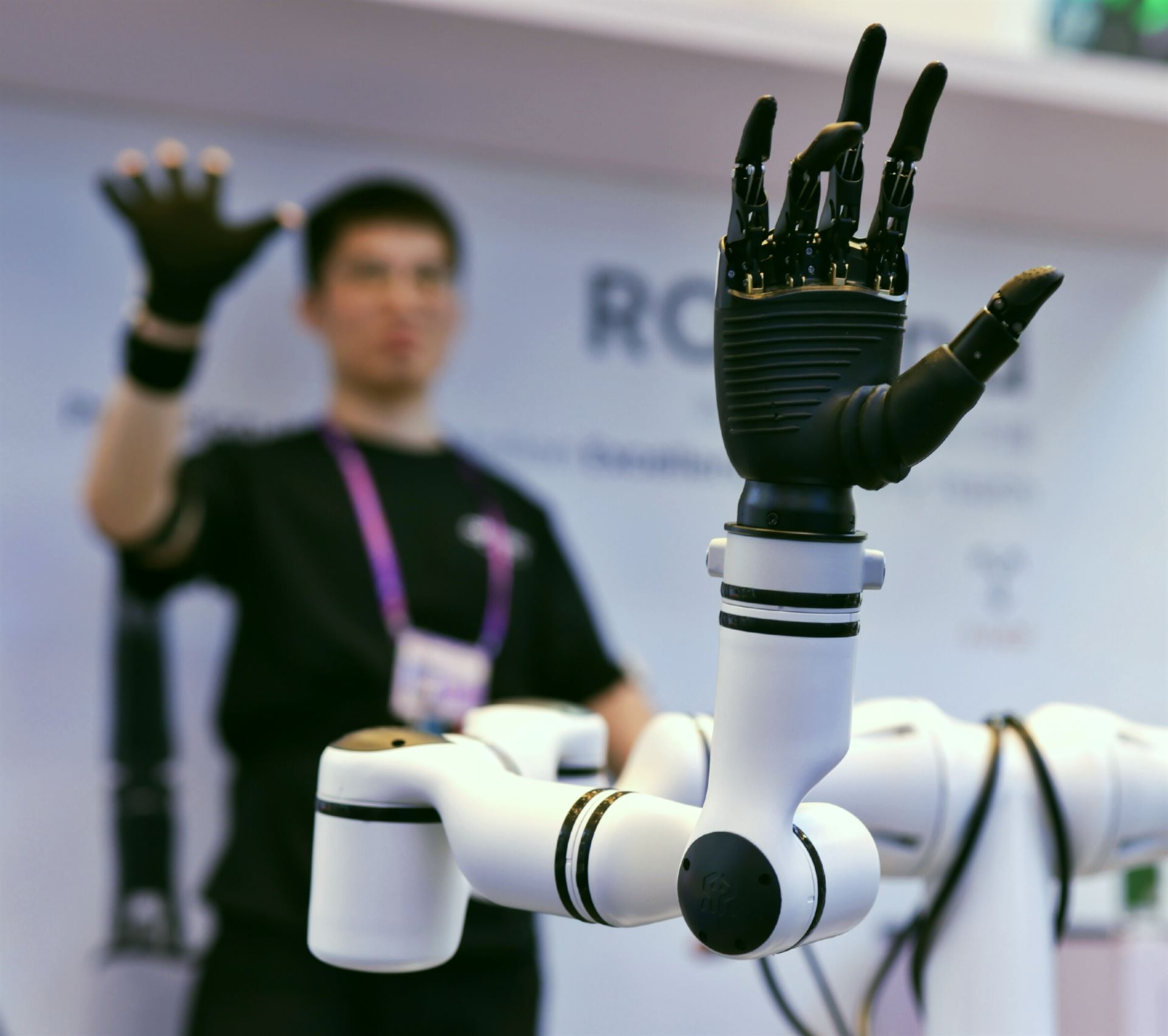
Growing localization of key components and application scenarios of service robots has helped enhance mass production capacity of Chinese mainland robotics manufacturers, experts have said.
Companies in the Guangdong-Hong Kong-Macao Greater Bay Area are leading the field, laying a solid foundation to gain a strong foothold in overseas markets.
Thanks to the development of the intelligent new energy vehicle industry, Chinese service robot companies have made remarkable breakthroughs in the localization of key components, such as sensors, laser radar and servomotors, and can now handle large-scale production, said Liu Shaoshan, director of the Center for Embodied AI at Shenzhen Institute of Artificial Intelligence and Robotics for Society.
“This offers a cost-effective, controllable and scalable hardware foundation for the upstream supply chain of embodied intelligence, which can effectively support large-scale application in the downstream,” he said.
READ MORE: Fast-moving electronic information industry fuels AI development
Liu noted that the broadening of application scenarios is a key factor in driving mass production of service robots, and China is taking the lead worldwide.
“The model of driving mass production through application scenarios development not only enhances the maturity and stability of products, but also gives Chinese service robot firms a competitive edge in overseas markets, enabling them to cater to overseas market demand faster and increase their global market share,” he said.
The expert believes tech players in the Greater Bay Area, in particular, have unique advantages in achieving mass production, given the region’s policy support, sound supply chain, technological strengths and rich application scenarios.
“Many tech companies in the Greater Bay Area have transitioned from existing hardware and engineering teams. When they go into the embodied intelligence sector, they focus more on the feasibility of engineering and commercialization. As a result, their products tend to have higher stability and readiness for mass production,” Liu said.
READ MORE: Guangdong's efforts fueling widespread innovation
Zhang Yang, associate professor of the Sino-German College of Intelligent Manufacturing at Shenzhen Technology University, said that given their strong international background and extensive overseas connection channels, Greater Bay Area tech enterprises own significant advantages in robot research and development, design and manufacturing, as well as industrial and creative design.
“This allows for a better understanding of demand and product design, making it easier to create service robots that meet the needs of overseas markets,” he said.
Earlier this week, Shenzhen-based Pudu Robotics announced that its 100,000th robot had rolled off the production line. The company generates over 80 percent of its revenue from overseas, with business covering over 60 countries and regions globally.
The service robot maker attributes the global expansion achievements to its engineering and mass production capabilities, which ensure high quality and stable delivery of products worldwide.
Other players in the region including EngineAI Robotics and Dobot are also stepping up mass production.
ALSO READ: Initiative launched to drive tech industry in GBA
According to Deloitte Research, the global service robot market is expected to reach $40 billion this year and further expand to $195 billion by 2035, indicating a compound annual growth rate of 17.1 percent.
“Chinese service robots have already established a significant presence in various segments in the United States and Europe, such as household and commercial cleaning, lawn mowing and pool cleaning,” Zhang said.
“Demand for robots that replace human labor in providing services, as well as robots for care and emotional companionship, is expected to grow gradually in developed countries and the development of these service robots will have enormous potential.”
Contact the writer at sally@chinadailyhk.com


